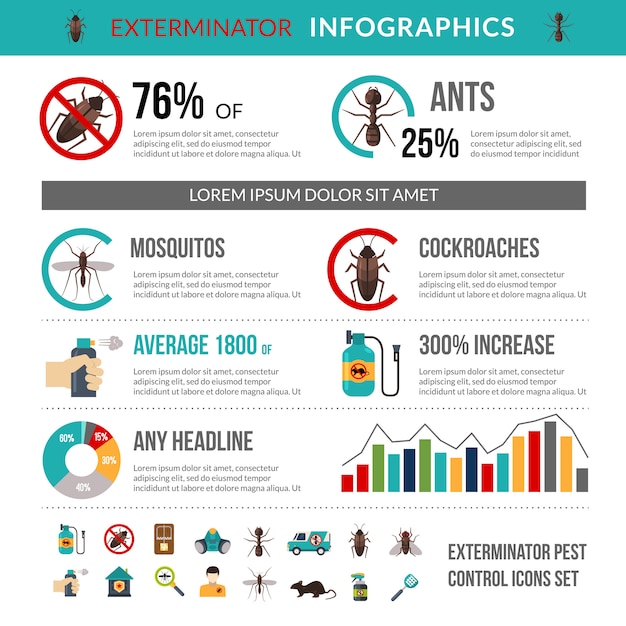Understanding The Life Process Of Bed Bugs: Advice From Bug Specialists
Understanding The Life Process Of Bed Bugs: Advice From Bug Specialists
Blog Article
Web Content Writer-Rush Ayala
Like a quiet invasion, bed insects can sneak right into your home, hiding in the darkness and waiting for the ideal minute to strike. Comprehending their life process is essential in managing these ruthless bugs, and that far better to turn to for guidance than the experts themselves?
In this conversation, you will uncover the secrets of the egg stage, the fairy stage, and the adult stage of bed bugs, untangling the secrets behind their durability and determination. Dental braces yourself, because what you will find will certainly leave you wondering about every little itch and bite.
The Egg Stage
During the egg stage, bed insects are in their earliest type, all set to hatch out and begin their life cycle. These small eggs are commonly stocked cracks and holes near the bed insect's feeding area, such as seams of bed mattress or furnishings. The female bed pest can lay up to five eggs daily, which amounts to hundreds in her lifetime.
The eggs are oval-shaped and concerning 1mm in length, making them hardly visible to the nude eye. https://docs.google.com/spreadsheets/d/1gu4ByGtghIofBNRz8YP_5WGzjsVBEXShijWYIWhrXN0/edit#gid=392590033 have a sticky layer that helps them comply with surfaces and stay in place. The egg phase lasts concerning one to two weeks, depending upon the temperature level and other ecological elements.
When the eggs hatch out, the fairies emerge, starting their trip towards their adult years.
The Fairy Phase
As the eggs hatch out, the recently emerged nymphs start their journey towards their adult years, marking the beginning of the fairy phase in the life cycle of bed pests. This phase is crucial for their advancement, and recognizing its features can aid in taking care of these parasites efficiently.
Here are 3 essential things to learn about the nymph stage:
1. Size and Appearance: Fairies are small, determining just about 1.5 mm in size. They're transparent, however after feeding, their bodies turn reddish-brown. As they expand, they shed their exoskeletons, leaving behind molted skins.
2. Feeding Habits: Like adult bed insects, nymphs feed upon blood. They need to feed numerous times to molt and progress to the following stage. Fairies generally feed on human beings or animals while they sleep, leaving behind scratchy bites.
3. Growth and Reproduction: Nymphs experience five instars before maturating. Each instar calls for a blood meal for growth. Once they become adults, they can reproduce and continue the bed pest life cycle.
Comprehending the nymph stage is essential for effective bed insect control. By targeting the fairies throughout this prone phase, you can avoid their progression in the direction of adulthood and halt their infestation.
The Adult Stage
After completing their growth as fairies, bed bugs enter the adult phase. At https://www.stgeorgeutah.com/news/archive/2023/08/07/jsb-copyright-preventivepest-23-a-very-buggy-area-preventive-pest-control-stops-creepy-crawlies-from-entering-southern-utah-homes/ , adult bed bugs are around 4-5 mm in size and have a flat, oval-shaped body that is reddish-brown in shade. They have six legs, antennae, and a tiny head. Adult bed pests are totally capable of duplicating and continuing their problem. They feed on blood, ideally human blood, and can survive without a dish for several months. They are primarily active in the evening and tend to hide in fractures, gaps, and furnishings during the day.
Grown-up female bed insects can lay up to five eggs daily. These eggs hatch right into fairies in about a week. Recognizing the behavior and life cycle of grown-up bed insects is vital in efficiently eliminating and stopping invasions.
Conclusion
Now that you recognize the life cycle of bed insects, you hold the power to shield your home.
Visualize a serene evening's sleep, devoid of the torture of these small bugs.
By identifying the signs and taking instant action, you can prevent invasions and guarantee the health of your liked ones.
Don't let these stealthy bugs invade your shelter.
Keep vigilant, remain notified, and sleep tight recognizing you remain in control.
